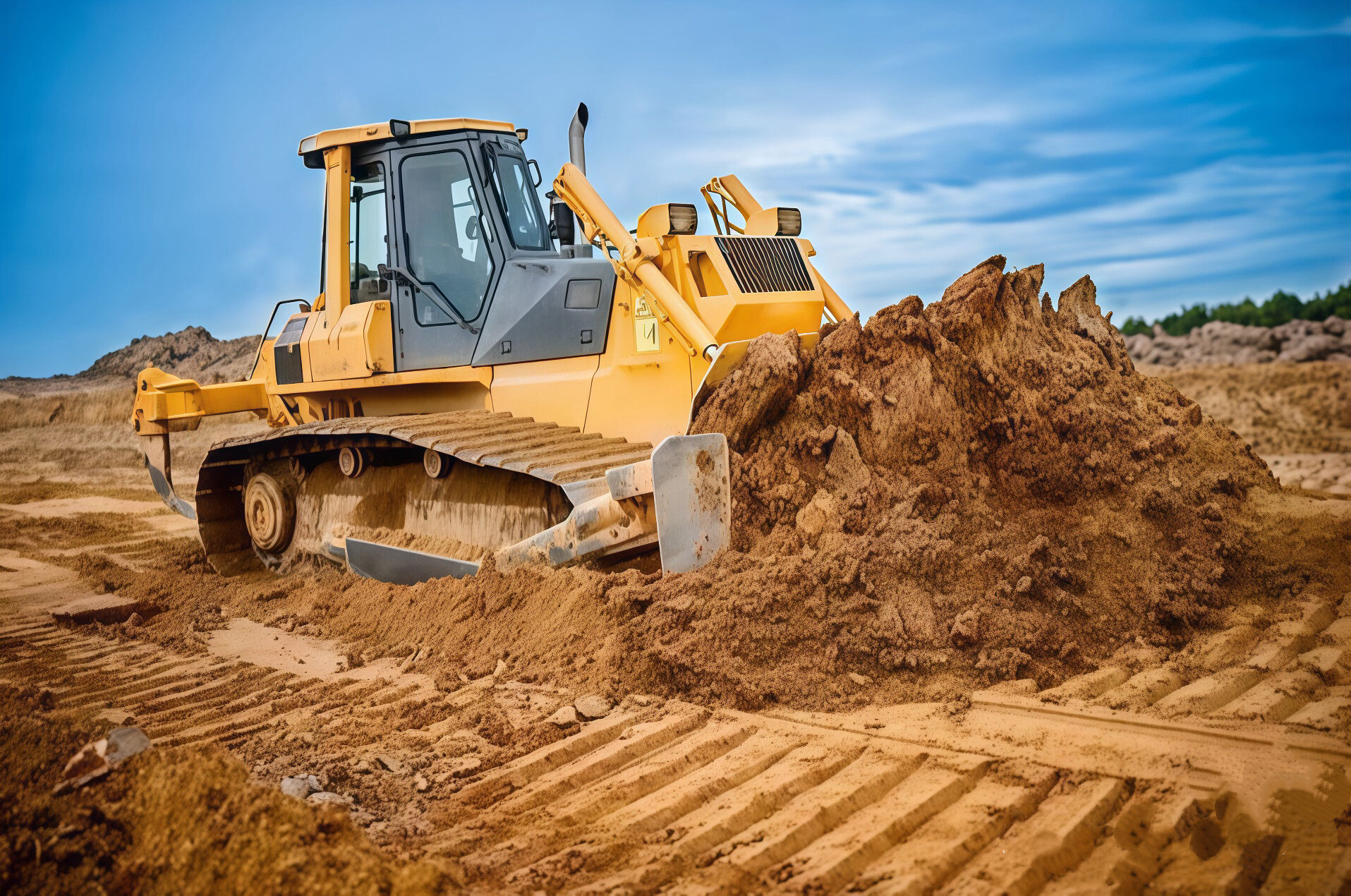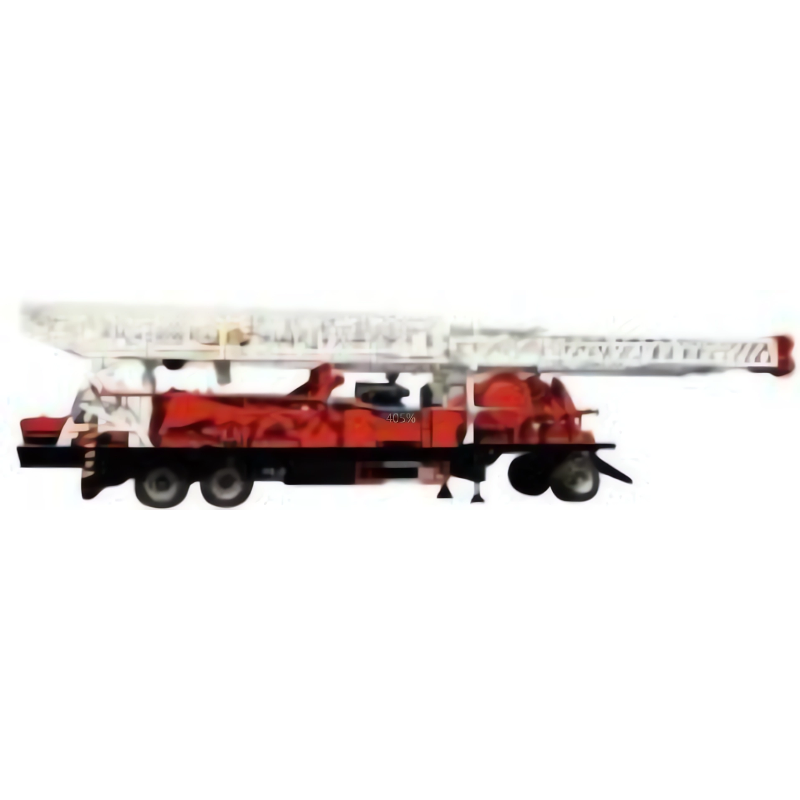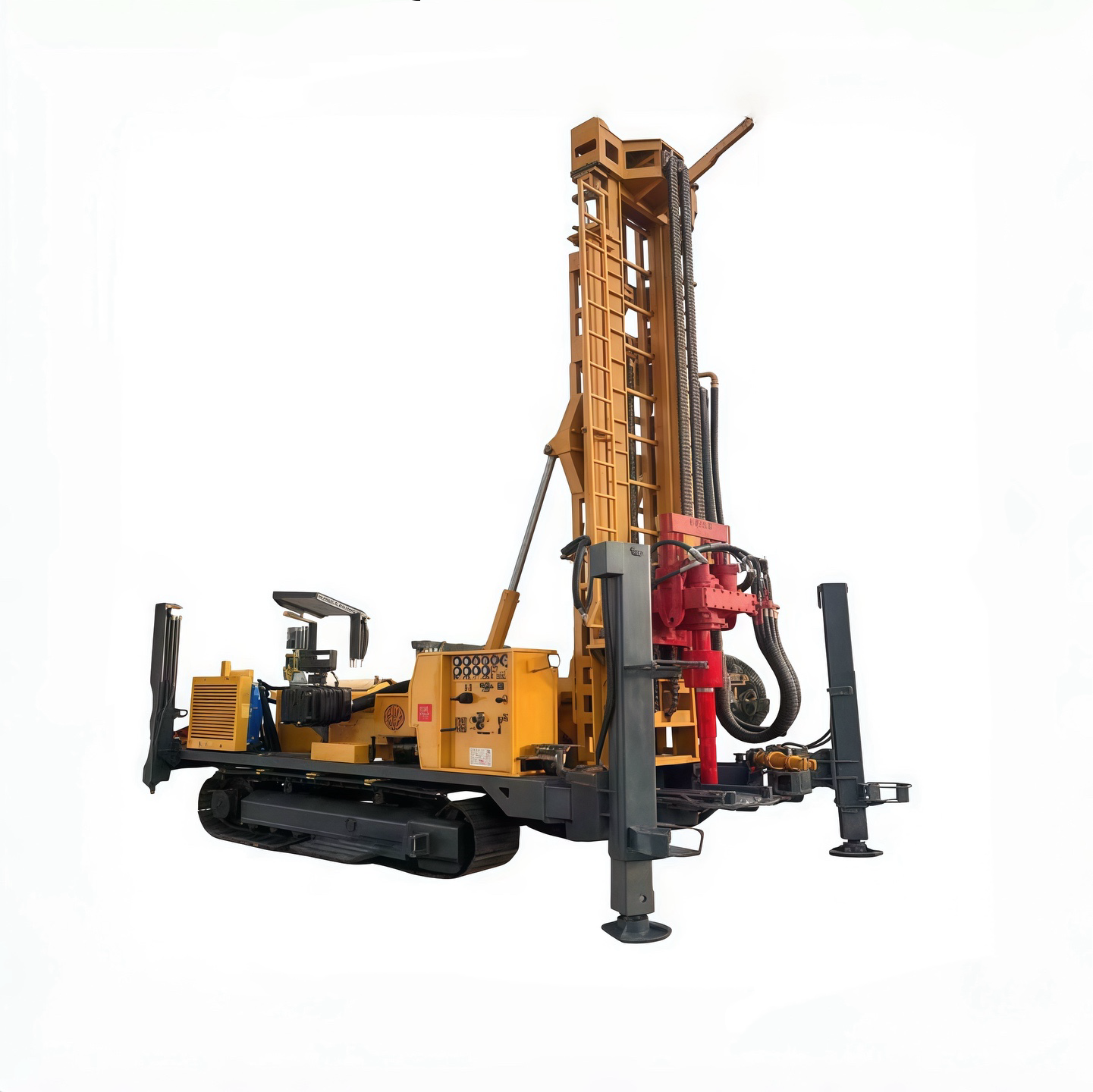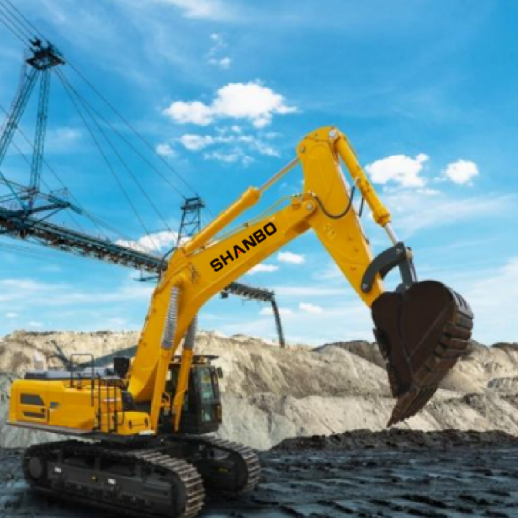Nøkkelfordringer for byggeutstyrsmarkedet i dag
Bygge- og anleggsindustrien er sentral i formingen av verdens infrastruktur, fremmer økonomisk vekst og driver industrier som spenner over alt fra boligbygging til store kommersielle prosjekter. Ettersom urbaniseringen tar fart og behovet for infrastruktur øker, står industrien overfor en dynamisk rekke utfordringer som bestemmer dens fremtidige vei.
Dette er spørsmål som er økonomisk, teknologisk, miljømessig og operativt orientert, og som krever strategisk ledelse for å opprettholde konkurranseevne og bærekraftighet. Denne artikkelen undersøker de viktigste utfordringene som bygge- og anleggsindustrien har stått ovenfor, og gir innsikt i deres konsekvenser og mulige løsninger.
Økonomiske press og markedsvolatilitet
Den første store utfordringen for byggeutstyrsmarkedet er økonomisk usikkerhet. Verdensmarkedets volatilitet, drevet av inflasjon, stigende renter og geopolitiske spenninger, skaper usikkerhet for kjøpere og produsenter. Mye av byggebransjen er en kapitalinvestering, og økonomiske nedgangstider fører til at regjeringer og private utviklere kutte ned på infrastrukturinvesteringer, noe som har direkte innvirkning på etterspørselen etter utstyr.
I tillegg har avbrudd i leverandøkjeden lagt til økonomisk press. Konsekvensene av globale hendelser, som pandemier og handelskriger, har ført til mangel på kritiske komponenter som halvledere, stål og hydraulikksystemer. Mangel på slike komponenter fører til høyere produksjonskostnader og saktere forsendelse av utstyr, noe som tvinger produsentene til å gå en finlinese med konkurranseevne i prissettingen. Små og mellomstore bedrifter, som vanligvis har mindre økonomisk styrke enn de store aktørene, blir hardest rammet av disse pressene.
For å håndtere disse problemene, ser aktører i bransjen på alternativer som å diversifisere leverandørkjeder, investere i innenlandsk produksjon og bruke fleksible prismekanismer. Disse alternativene krever mye kapital og langsiktig strategisk planlegging, noe som kanskje ikke gir den forventede hurtige lettelser.
Teknologiske fremskritt og barriere for innføring
Den raske teknologiske utviklingshastigheten skaper både utfordringer og muligheter for bygge- og anleggssektoren. Nye teknologier som automasjon, telematikk og kunstig intelligens endrer utstyrskonstruksjon, ytelse og vedlikehold. Intelligente maskiner utstyrt med sensorer kan for eksempel forbedre brennstofforbruket, overvåke ytelse i sanntid og identifisere vedlikeholdsbehov, og dermed redusere driftsstopp og driftskostnader.
Men å implementere disse teknologiene i eksisterende arbeidsflyter er ikke uten vanskeligheter. Kostnaden for avansert utstyr avskrekker mindre byggere fra å erstatte flåter, noe som effektivt skaper en kløft mellom store selskapskonserner og små bedrifter. I tillegg utgjør mangel på erfarne operatører med ferdigheter til å betjene de mest avanserte systemene en betydelig hindring. Majoriteten av arbeidsstokken i byggebransjen er vant til konvensjonelt utstyr, og tilpasning til automatisert eller dataverkstedkst utstyr krever omfattende opptrening.
Et annet teknologisk problem er cyber-sikkerhet. Ettersom mer utstyr blir koblet sammen gjennom IoT (Internet of Things) nettverk, øker risikoen for cyberangrep. Cyberangripere kan utnytte svakheter i utstyrets programvare, noe som kan føre til produksjonsstopp eller sikkerhetsproblemer. Produsentene må investere i gode cyber-sikkerhetssystemer, noe som igjen fører til høyere kostnader.
Disse utfordringene kan møtes ved å fokusere på rimelige opplæringsprogrammer og billige finansieringsløsninger for småbedrifter. Strategisk samarbeid mellom produsenter, myndigheter og utdanningsinstitusjoner kan bidra til å overkomme ferdigshull og fremme bruk av teknologi.
Miljøregler og bærekraftskrav
Grønne spørsmål omdefinerer markedet for byggeutstyr ettersom regjeringer over hele verden innfører regler for å bekjempe klimaendringer. Nødvendigheten av reduserte CO2-utslipp har ført til påkrevd bruk av lavutslipp eller nullutslippsutstyr, særlig i områder med høye bærekraftsmål. I sentrum av byer kreves det for eksempel stadig hyppigere elektrisk eller hybridutstyr for å minimere luftforurensning og støyforurensning i tettbebygde områder.
Selv om grønnere utstyr er et krav, følges dette med enorme utfordringer. Investeringer i forskning og utvikling for å lage elektrisk- eller hydrogenfremdrevne maskiner er en kostbar affære. I tillegg er infrastrukturen for å støtte alternative drivstoffer, som store ladeenheter eller hydrogenfyllingsstasjoner, fremdeles i startgropene i de fleste geografiske områder. Dette gjør bruken av grønt utstyr uoverkommelig, spesielt på avsidesliggende eller landsbygde byggeplasser.
For det andre er produksjon av bærekraftig maskineri ofte knyttet til komplekse leverandkjeder for sjeldne materialer, som kobolt og litium, som brukes i batterier og som reiser etiske og miljømessige bekymringer. Selskaper må balansere bærekraftskrav mot den prisen miljøet betaler for å skaffe slike materialer.
For å møte disse utfordringene vurderer sektoren innovasjoner som modulære utstyrskonstruksjoner som forenkler oppgradering til renere teknologi. Allianser med leverandører av fornybar energi og statlig støtte for grønne praksiser kan også akselerere overgangen til grønt utstyr.
Manglende arbeidskraft og utfordringer i arbeidsstokken
Byggeutstyrindustrien er dominert av byggenæringens arbeidsstokk generelt. Den står ovenfor en kronisk mangel på faglig kvalifisert arbeidskraft, slik som operatører, mekanikere og teknikere, noe som påvirker industrien negativt. Eldre aldersgrupper i de fleste utviklede land og yngre generasjoner som mangler interesse for karriere innen byggenæringen forverrer problemet. Som et resultat står utstyr ofte ubrukt fordi det mangler kvalifisert personell til å betjene eller vedlikeholde det.
Kompleksiteten i nyere utstyr forsterker bare problemet. Mer avansert maskineri krever et høyt nivå av spesialiserte ferdigheter for vedlikehold og drift, og industrien klarer ikke å finne eller beholde slike personer. Høy utskiftning og konkurranse fra andre sektorer, som teknologi og produksjon, undergraver etableringen av en stabil arbeidsstokk.
For å motvirke virkningene av arbeidskraftmangel, investerer selskaper kraftig i automasjon for å redusere behovet for manuelle operatører. For eksempel kan automasjonsutstyr utføre repetitivt arbeid med minimal oppsyn, og frigjør ansatte til å ta på seg mer kompliserte oppgaver. Andre tiltak for å lokke nye arbeidstakere til sektoren innebærer å tilby rettferdig lønn, fullstendige opplæringprogrammer og separate karriereveier.

Stigende driftskostnader og effektivitetskrav
Driftskostnader er et økende problem som byggeindustrien står ovenfor. Drivstoffpriser, vedlikeholdskostnader og lønnskostnader fortsetter å stige, noe som presser marginene for entreprenører og utstyrsleverandører. Samtidig ønsker kundene at prosjektene skal leveres raskere og mer effektivt, noe som presser selskaper til å effektivisere driften.
Drivstoffeffektivitet er også et stort fokusområde, med tanke på energien som brukes av tungt utstyr. Produsentene lager utstyr med bedre drivstoffeffektivitet, men teknologien medfører høyere startinvesteringer. Vedlikehold av høyteknologisk utstyr bruker også spesialiserte komponenter og teknisk kompetanse, noe som driver kostnadene enda høyere.
For å bekjempe disse utfordringene, adopterer selskaper prediktiv vedlikeholdsteknologi som bruker dataanalyse til å forutsi utstyrssvikt før de inntreffer. Overgangen minimerer nedetid og reduserer reparasjonskostnader. Å leie eller leie utstyr i stedet for å kjøpe er en annen strategi som er i modet, siden dette tillater entreprenører å bruke gjeldende utstyr uten eierskapskostnadene.
Global konkurranse og markedsmetning
Markedet for byggeutstyr er i høy grad konkurransepreget, med de største aktørene fra ulike geografiske områder som kjemper om markedsposisjoner. Utviklingsland opplever økt etterspørsel etter infrastrukturutvikling, og dette skaper muligheter for produsenter. Dette fører imidlertid også til markedsmetning i visse segmenter, hvor det er en økning i billig utstyr, noe som kan føre til lavere priser og redusert lønnsomhet.
Å konkurrere på kvalitet, innovasjon og ettersalgstjeneste er avgjørende for produsenter som ønsker å skille seg ut. Men små selskaper mangler skaløkonomiene som større konkurrenter har tilgang til, noe som gjør det vanskelig for dem å konkurrere på pris i prisfølsomme markeder.
For å møte denne utfordringen setter selskaper fokus på nisjemarkeder eller spesialisert utstyr tilpasset spesifikke industrier, som gruvedrift eller fornybare energiprosjekter. Å bygge stabile kunderelasjoner basert på pålitelig service og support kan også hjelpe produsenter med å trenge inn på en mettet marked.
Konklusjon
Bygge- og anleggsindustrien står ovenfor et komplekst sett med utfordringer, fra økonomiske svingninger og teknologiske problemer til miljøreguleringer og mangel på arbeidskraft. Selv om disse er store utfordringer, gir de også muligheter for innovasjon og vekst.
Med en konservatør holdning til bærekraft, investeringer i kompetanseutvikling og innføring av avanserte teknologier kan industrien overkomme disse utfordringene og konkurrere i en ny global kontekst. Samarbeid mellom produsenter, entreprenører og beslutningstakere vil være avgjørende for å sikre bygge- og anleggssektorens motstandskraft og evne til å møte verdens infrastrukturbehov.
Anbefalte produkter
 Siste nytt
Siste nytt
-
«Vannfredner» 200 m revers sirkulasjon vannbrønn boremaskiner ankommer i Usbekistan
2025-03-28
-
Bulldozer Transportguide: Beste praksis, sikkerhetstips og kostnadsfaktorer
2025-12-15
-
En komplett guide til frakt av anleggsmaskiner: Metoder, kostnader og tips
2025-12-12
-
Slik gjøres arbeid med bulldoser: Nøkkeltasker, teknikker og anvendelser
2025-12-11
-
Utforsker evnene til verdens største gravemaskin
2025-12-10
-
Viktige Bulldozerutstyr: Komponenter, tilbehør og bruksområder
2025-12-09












